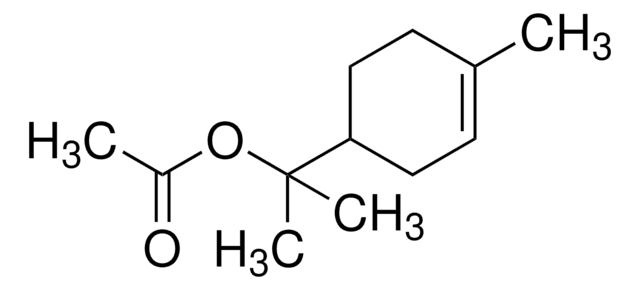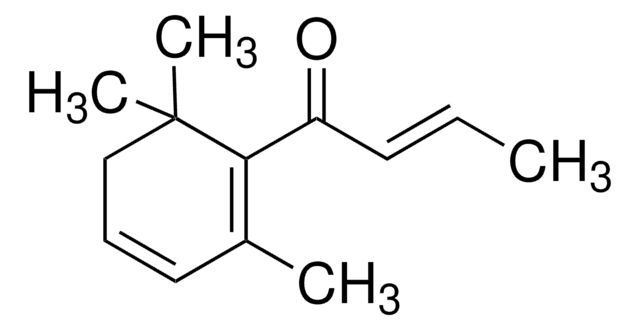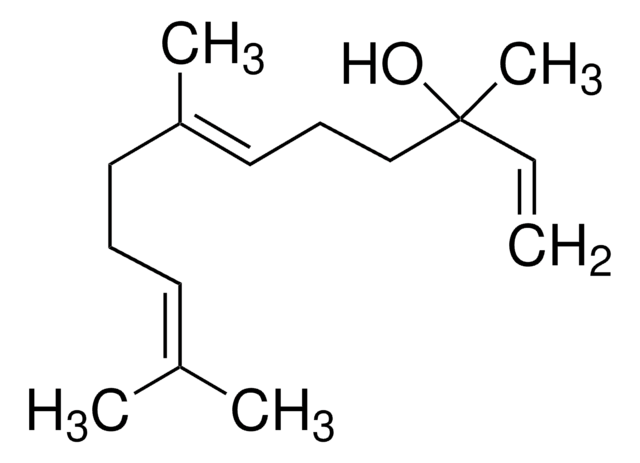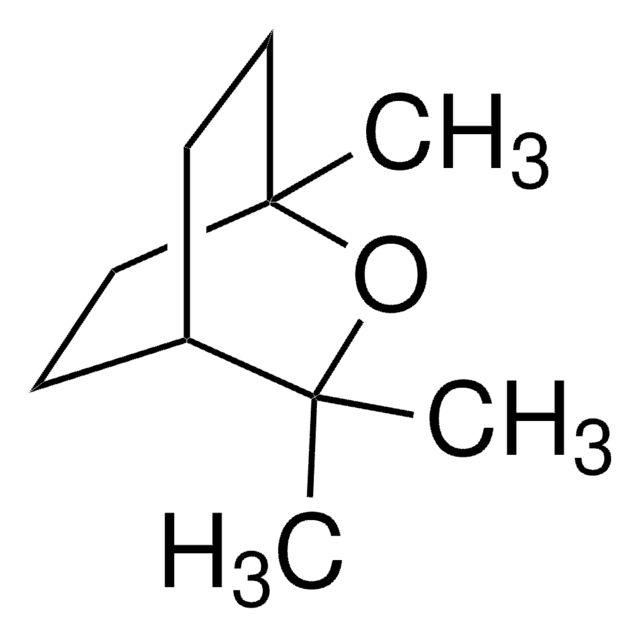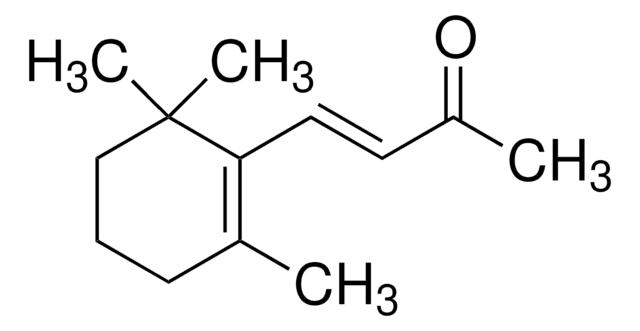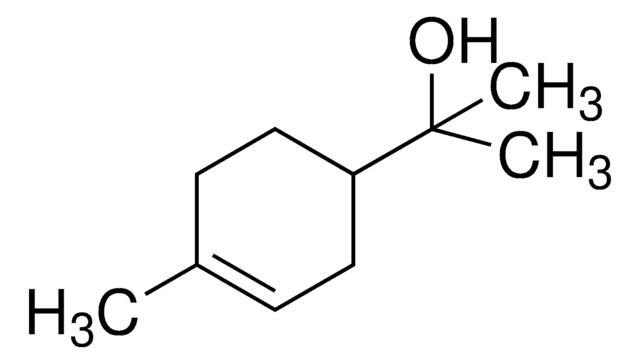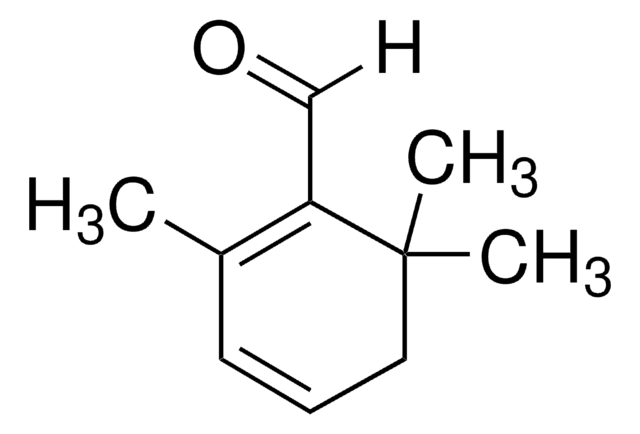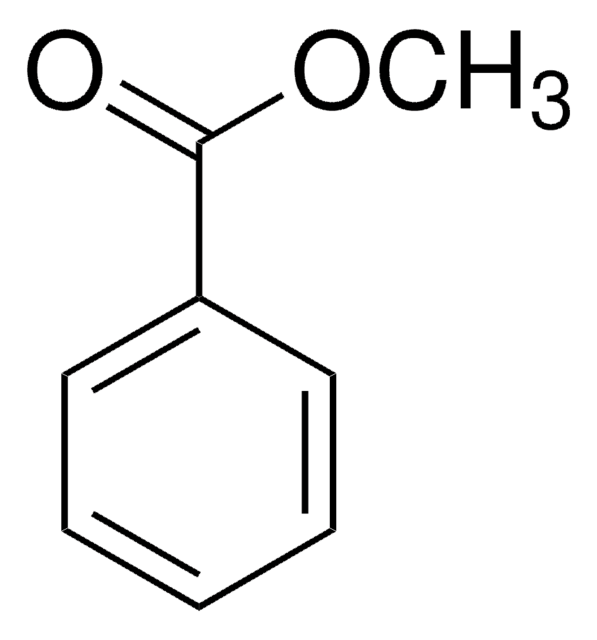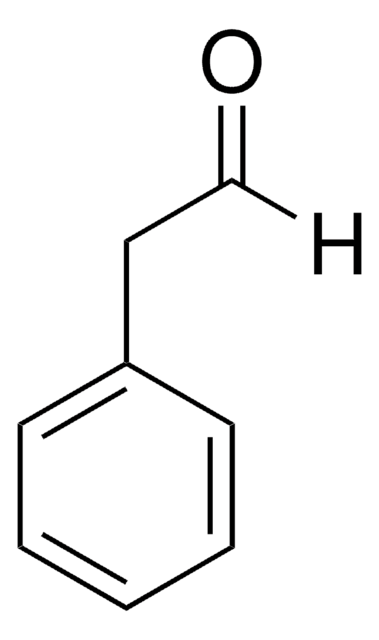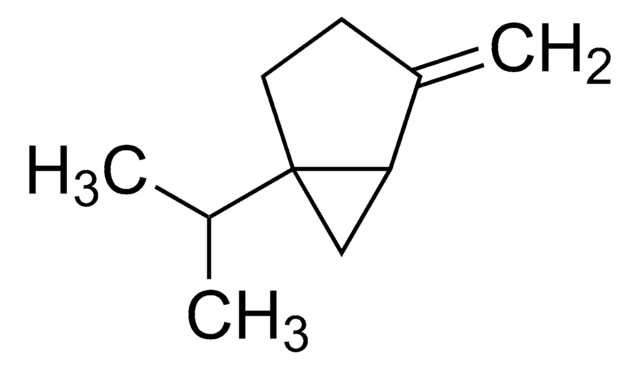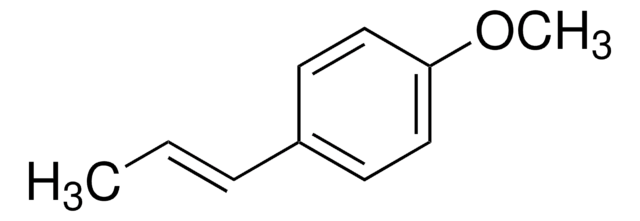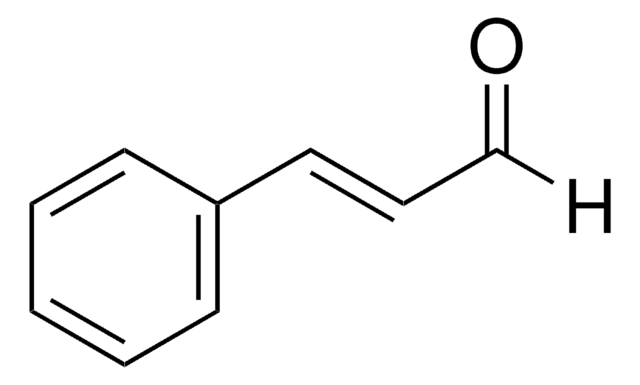W304799
α-Terpinyl acetate
FG
Synonym(s):
(±)-α-Terpinyl acetate, predominantly α-isomer, (±)-2-(4-Methyl-3-cyclohexenyl)isopropyl acetate
About This Item
Fragrance grade
Halal
Kosher
Recommended Products
biological source
synthetic
Quality Level
grade
FG
Fragrance grade
Halal
Kosher
Agency
follows IFRA guidelines
reg. compliance
EU Regulation 1223/2009
EU Regulation 1334/2008 & 178/2002
FDA 21 CFR 172.515
refractive index
n20/D 1.465 (lit.)
bp
220 °C (lit.)
density
0.953 g/mL at 25 °C (lit.)
application(s)
flavors and fragrances
Documentation
see Safety & Documentation for available documents
food allergen
no known allergens
fragrance allergen
no known allergens
Organoleptic
herbaceous; floral; woody; citrus; spicy
SMILES string
CC(=O)OC(C)(C)C1CCC(C)=CC1
InChI
1S/C12H20O2/c1-9-5-7-11(8-6-9)12(3,4)14-10(2)13/h5,11H,6-8H2,1-4H3
InChI key
IGODOXYLBBXFDW-UHFFFAOYSA-N
Looking for similar products? Visit Product Comparison Guide
Related Categories
General description
Application
- Eucalyptus Oils Phytochemical Composition in Correlation with Their Newly Explored Anti-SARS-CoV-2 Potential: in Vitro and in Silico Approaches.: This research evaluates the antiviral potential of Eucalyptus oils, including α-terpinyl acetate, highlighting its role in combating SARS-CoV-2 through various biochemical mechanisms and suggesting its utility in therapeutic formulations (El-Shiekh RA et al., 2024).
- Systematic analysis of antimicrobial activity, phytochemistry, and in silico molecular interaction of selected essential oils and their formulations from different Indian spices against foodborne bacteria.: Investigates the antimicrobial properties of essential oils containing α-terpinyl acetate, underscoring its effectiveness against foodborne pathogens and its potential in food safety applications (Gupta N et al., 2023).
Hazard Statements
Precautionary Statements
Hazard Classifications
Aquatic Chronic 2
Storage Class Code
10 - Combustible liquids
WGK
WGK 2
Flash Point(F)
212.0 °F - closed cup
Flash Point(C)
100 °C - closed cup
Choose from one of the most recent versions:
Already Own This Product?
Find documentation for the products that you have recently purchased in the Document Library.
Customers Also Viewed
Our team of scientists has experience in all areas of research including Life Science, Material Science, Chemical Synthesis, Chromatography, Analytical and many others.
Contact Technical Service